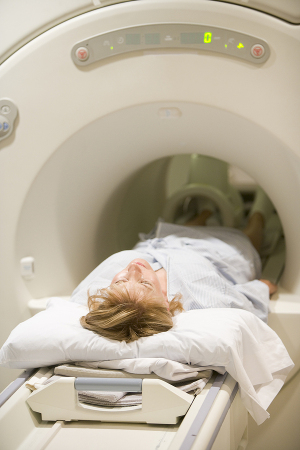by
John R. Fischer, Senior Reporter | August 16, 2022

EHR guidelines may reduce a provider's reliance on contrast-enhanced CT as the shortage of contrast media continues worldwide.
Implementing entry-based guidelines for EHR orders may enable large healthcare systems to significantly cut back the number of contrast-enhanced CT exams they perform while the global shortage of iodinated contrast media continues.
In a retrospective study, researchers at Brigham and Women's Hospital looked at these exams performed at two large academic medical centers, seven community hospitals, three specialty hospitals and multiple affiliated ambulatory care centers. All used a single EHR System, Epic System’s Hyperspace.
Among 78,792 patients who underwent at least one CT exam in outpatient, inpatient and emergency department settings, the authors found that interventions in EHR orders led to a decrease in procedures using contrast media.



Ad Statistics
Times Displayed: 173329
Times Visited: 3163 For those who need to move fast and expand clinical capabilities -- and would love new equipment -- the uCT 550 Advance offers a new fully configured 80-slice CT in up to 2 weeks with routine maintenance and parts and Software Upgrades for Life™ included.
"The number of patients undergoing contrast-enhanced CT examinations per day decreased by 12%, and the number of orders for CT with contrast media decreased by 15.2% per day," they wrote in the study.
Brought on by the shutdown in March of GE Healthcare's Shanghai plant, the shortage has caused providers worldwide to
ration nonurgent procedures and curb their use of contrast agents for those that require it the most. And while the plant has reopened, the impact still lingers.
In the study, the providers implemented an initial EHR intervention on May 10 that created a sidebar alert after any contrast-enhanced body CT order to remind the physician of the iohexol shortage and recommend alternative imaging modalities. A second intervention on May 16 required referrers to enter detailed clinical information for any contrast-enhanced body CT order. Radiologists used this information to protocol exams.
The mean number of patients who received contrast-enhanced CT each weekday dropped from 726 to 689 to 639 during pre-intervention, first post-intervention and second post-intervention periods, respectively. The mean number of contrast-enhanced CT orders was 154, 143 and 131.
"The findings indicate the ability to rapidly achieve changes in ordering clinician behavior and subsequent clinical practice using systemwide EHR changes," wrote first author Daniel Glazer, of the Center for Evidence-Based Imaging at Brigham and Women's Hospital.
Some short-term strategies for dealing with the shortage also
include using alternative agents such as gadolinium for renal insufficiency; and carbon dioxide for renal dysfunction. Other modalities like intravascular ultrasound can be used for vascular procedures without contrast media and decrease radiation exposure and operation times, according to a group of radiologists who published a list of guidelines for dealing with the shortage, back in June.
The findings were published in the
Journal of Roentgenology (AJR).

